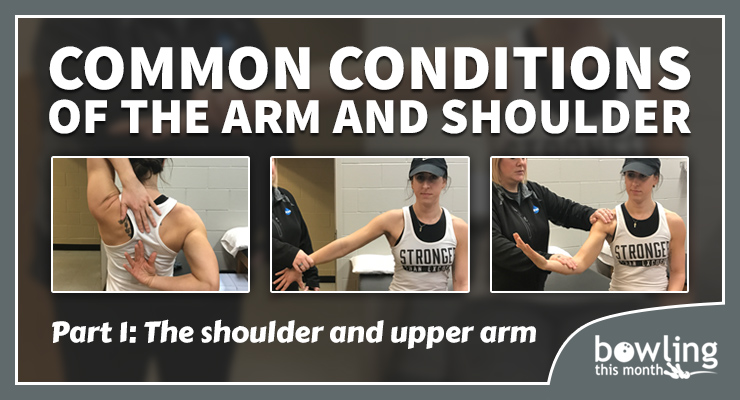Article Contents
- 1. Common conditions
- 1.1. Frozen shoulder
- 1.2. Shoulder impingement syndrome
- 1.3. Rotator cuff tendinosis
- 1.4. Bicipital tendinosis
- 2. Testing
- 2.1. Apley Scratch Test
- 2.2. Drop Arm Test
- 2.3. Empty Can Test
- 2.4. Speeds Test
- 3. Closing thoughts
Note: This article is only available to Bowling This Month subscribers.
To follow up on my last article about injury prevention for the rotator cuff, I wanted to discuss some common conditions of the arm and shoulder that can develop in cases where the “prevention” hasn’t occurred and pain may already be present. Since bowlers don’t typically take breaks from the sport, chronic overuse injuries such as these are commonly seen as we tend to beat up our joints over time without knowing it or following plans to prevent dysfunction.
When it comes to the wrist, forearm, and shoulder, I most often hear complaints of “tendonitis.” However, tendonitis isn’t always the correct word to use. Tendonitis is the term for acute inflammation of a tendon. Once it is past the acute stage and is a chronic long-term inflammation and degeneration, the correct term is “tendinosis.” Note that there is also a third related term, “tenosynovitis,” which is inflammation of the tendon and its surrounding tendon sheath.
This article covers major conditions that can develop in the upper arm and shoulder. However, we know that bowling can also cause many injuries to the forearm, wrist, and hand. My next article—Part 2 covering conditions of the arm—will discuss the most common injuries bowlers experience in the elbow, the radiocarpal joint, and the hand, including “golfers elbow,” “tennis elbow,” bursitis, and carpal tunnel syndrome.
Common conditions
The shoulder is susceptible to many injuries because it is a multi-planar joint that conducts flexion, extension, lateral rotation, internal rotation, abduction, adduction, horizontal abduction, and horizontal adduction. With this joint allowing so much movement, it is left vulnerable to numerous conditions. Let’s start by discussing several of the most common ones, followed ...
Already a premium member? Click here to log in.


 (Only
(Only 